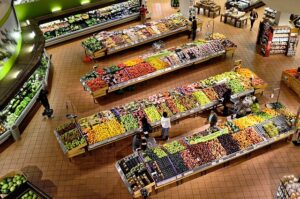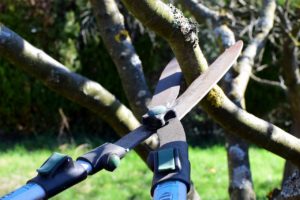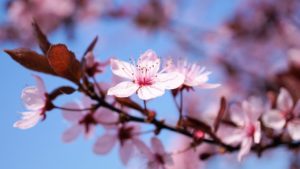Shopping in Germany can be a daunting experience if you are not familiar with how things work here.
The worst is probably grocery shopping. In South Africa there is usually someone at the till that bags your groceries for you. It is mostly a relaxed experience and you can even pay some of your utility bills at the till.
In Germany, there are no grocery packers and the workers at the till are extremely fast and efficient. So much that you do not even have time to pack in your own groceries. And don’t even dare to ask for a plastic bag! The best is to take your own reusable bags with you and pack your items into the trolley so that you can bag them at your leisure.
Payment options have changed since the Corona pandemic, and more stores are accepting cash cards and mobile payments. Credit cards are still not accepted at all stores.
Shops like Rewe now have self-help tills where you scan your own items and pay. It works with the weight of your items that you have to unpack before scanning so it is suited when you have only a few items.
Another difference to shopping in SA is the personal service you get in some stores, especially clothes or speciality shops.
Often you will get a salesperson asking if they can help you, and if you do need help they will make a great effort to give the correct advice.
Some clothing stores will help you with your wardrobe or give advice on what to wear to a specific event.
In some shoe shops, the attendant will ask if want to keep the box (die Schachtel). The next question will then be if you need a bag or have a bag (die Einkaufstüte or just Tüte). If you brought your own you can just answer “ja ich habe eine dabei Danke”
Something you should never do is make use of the advice in a shop and then go buy the item online. This is not fair towards the salesperson.
Clothes
We understand that shopping for clothes can be a daunting task, with so many options and stores to choose from. That’s why we’ve created a page dedicated to helping you find the best places to shop for clothes. Whether you’re looking for trendy boutiques, affordable department stores, or high-end designer labels, we’ve got you covered.
We also have a detailed page specifically dedicated to clothing sizes for women.

Where to shop for clothes
We understand how difficult it can be to find the perfect shop where you can buy new clothes. That’s why we took the initiative to put together a comprehensive list of shops that we believe could be helpful in your search. If there are shops that you believe should be included

Clothing sizes – Women
Woman’s Clothing The following table is a rough guide for Woman’s clothing. Most online shops will have a measurement guide, but even then it might not fit as expected. Shoes This is not a precise conversion, but a rough indication. This for men’s and women’s shoe sizes Vocabulary English German Bra
Grocery shopping

Grocery Shopping
It is very easy to become overwhelmed when you first go grocery shopping in Germany. The layout of the shops is different, many of the products you know are not available and you have no idea what plastic wrap is called in German.We hope the information on this page helps
House and home
Information about bed, duvet and pillow sizes in Germany.

Beds, Mattresses and Duvets
The sleeping arrangements in Germany is a bit different from what we are used to in South Africa. The average German couple sleeps on a bed base with two single mattresses and each with their own duvet.Some would argue for this but I would at least want to share a
Additional information

Similar Shops
Back home, you know exactly in what shop to look for specific items, where to find quality products and what shops have cheaper options.We tried to make a comparison of SA and German shops in the list below. You welcome to send us your suggestions via or Contact us page Related

Product Substitutes
Most products we know in South Africa are available in Germany, but unfortunately not all of them. Here is a list of product substitutes for some of them. I you would like more information about where to buy South African products in Germany, see our Products we love page. Food related products

Substitutes and Food Info
There are countless South African products that can be conveniently purchased online today. In those rare instances where you can’t find what you’re looking for in Germany, worry not, because there are plenty of excellent substitutes available that you can consider. We have taken the liberty of compiling a list
Some helpful phrases/Terms:
- No thank you, I am just looking – Nein danke, ich schaue mich nur um.
- Where are the changing rooms – Wo sind die Umkleidekabinen?
- Can I try it on? – Kann ich es anprobieren?
- I’ll take it – Ich nehme es
- How much does it cost? – Wieviel kostet es?
- Do you need a bag? – Brauchen Sie eine Tüte?
- Do you want a receipt? – Möchten Sie einen Beleg?
- Special offer – das Sonderangebot
- Sale – der Ausverkauf
- Shopping basket – der Einkaufskorb
- Shopping trolley – der Einkaufswagen
- to pay – bezahlen
- Bakery – die Bäckerei
- Department store – das Kaufhaus
- Sweet Shop – der Süßwarenladen
- Butcher – die Fleischerei oder die Metzgerei
- Chemist – die Aphoteke
- Supermarket – der Supermarkt
- Till or checkout- die Kasse
- The price – der Preis
- Bag – die Tasche
For more have a look on this page
Related content

Gardening Rules
Did you know your garden and the local green spaces are living habitats for wildlife and insects?If you cut back or trim your plants too

South African Recipes
Click here to submit your recipe Seasonal recipes Resources on the web Ina Paarman Pinterest – on the Braai Jan Braai Watertand resepte vir oud en

Weather in Germany
German Climate Germany’s climate is temperate and marine, with cold, cloudy winters and warm summers and in the south occasional warm föhn wind. The greater



You must be logged in to post a comment.